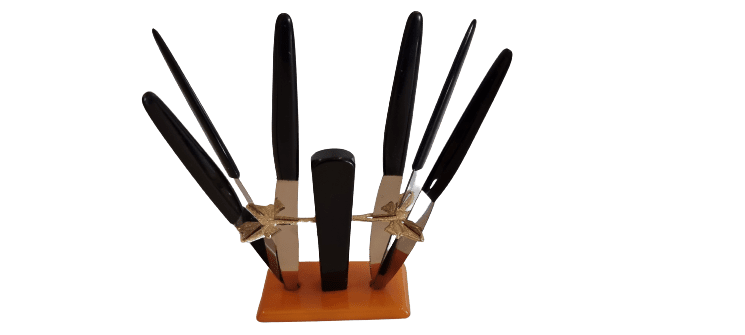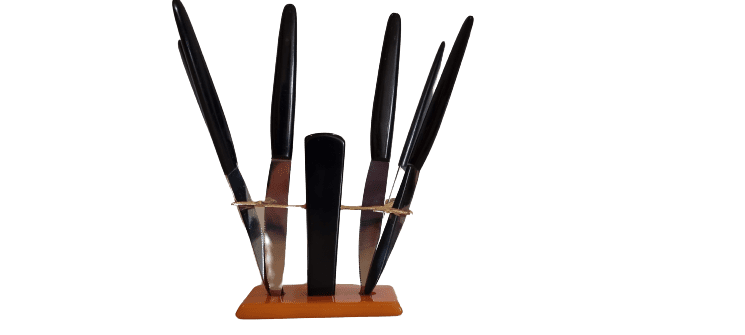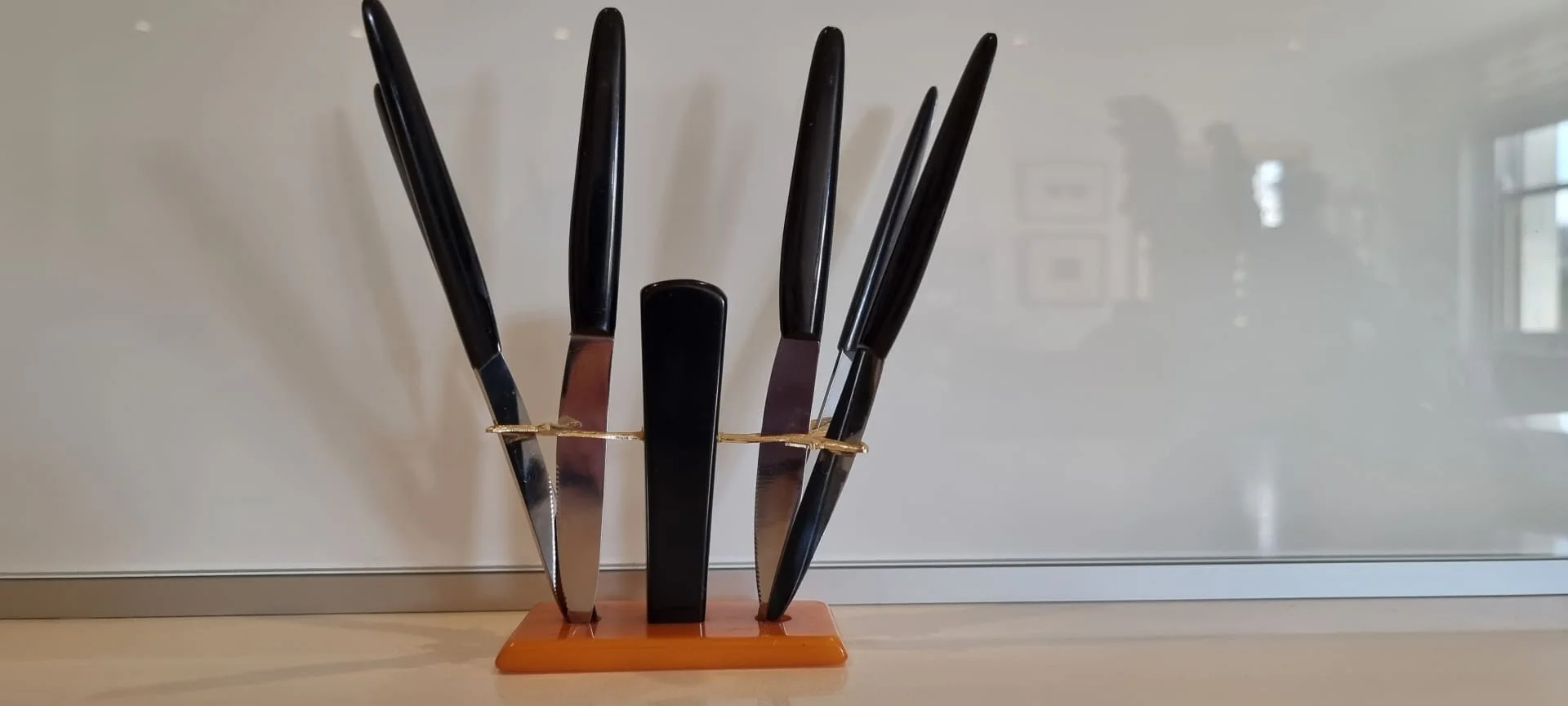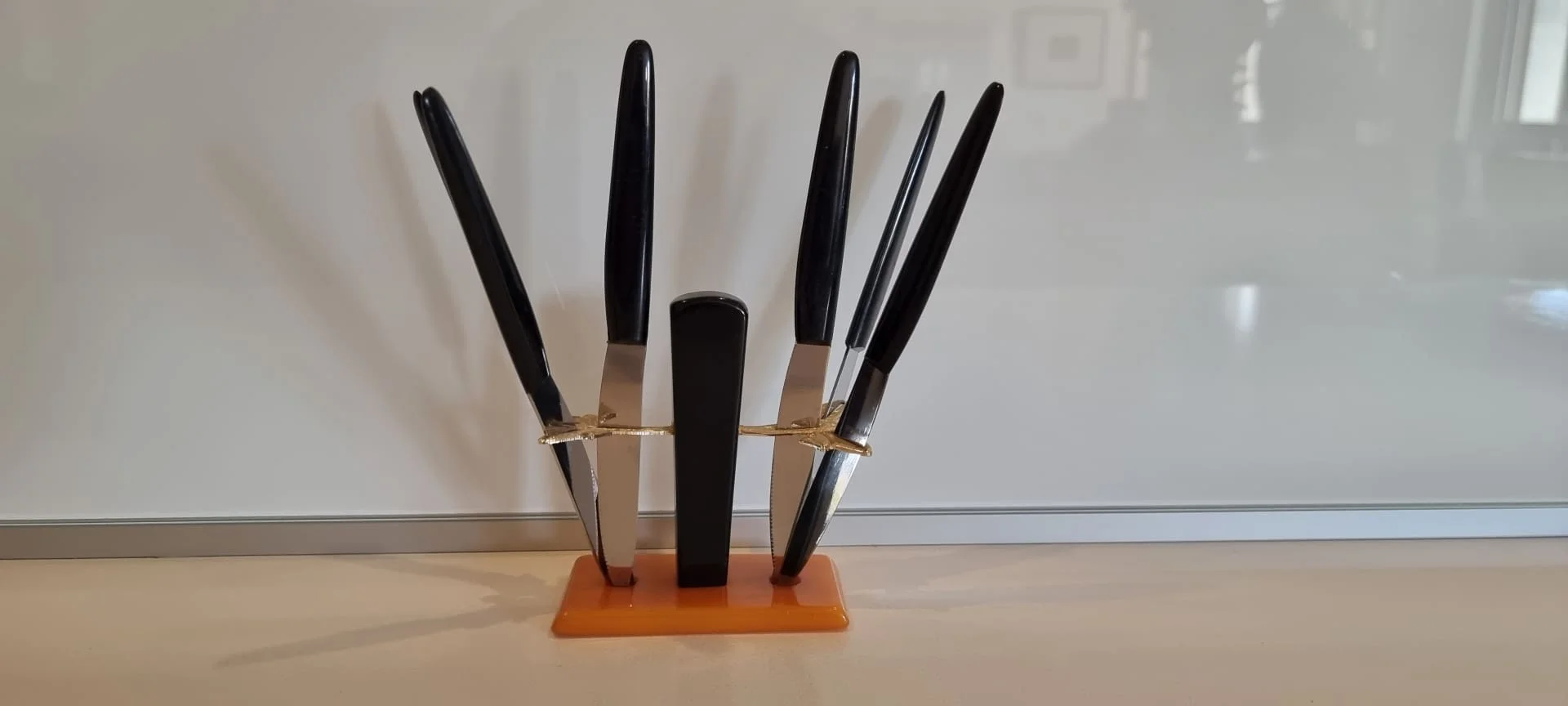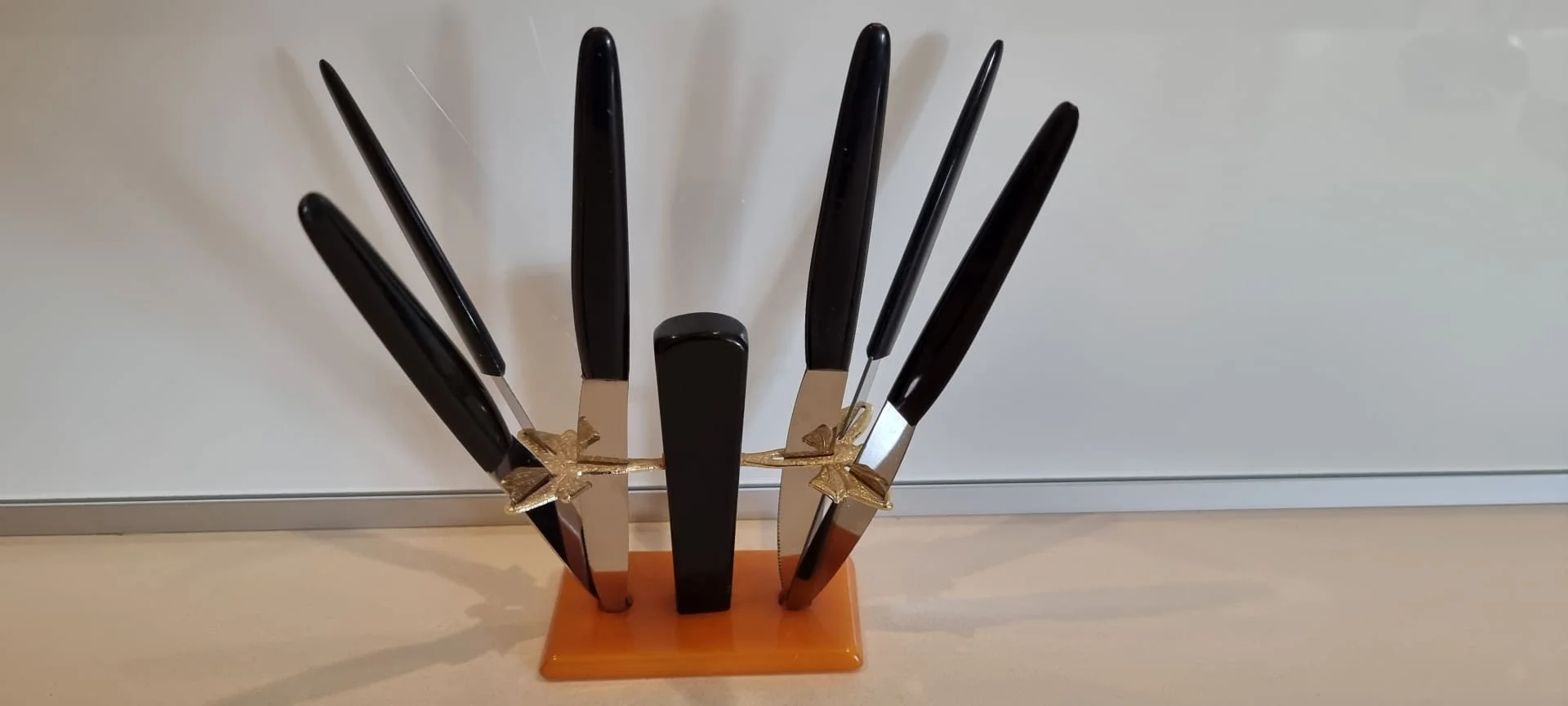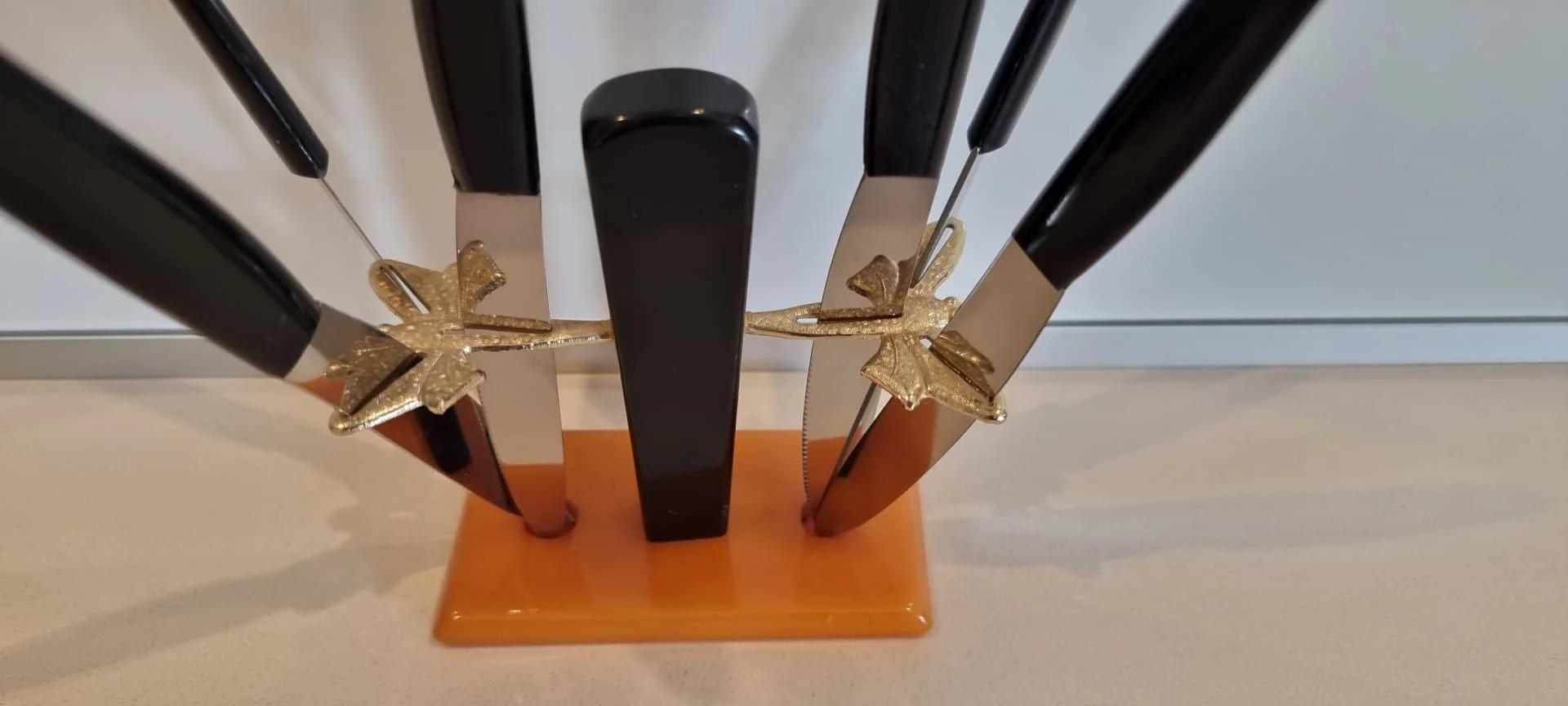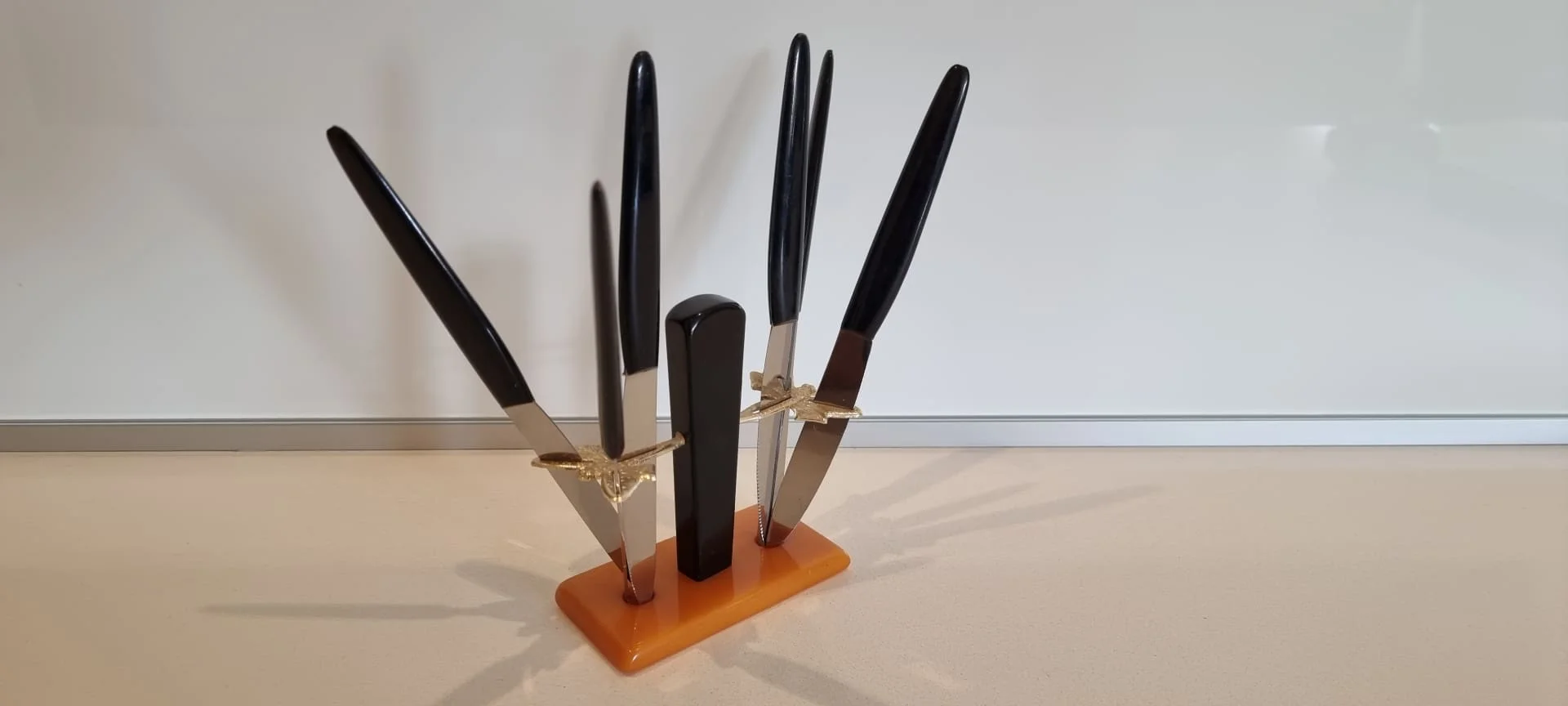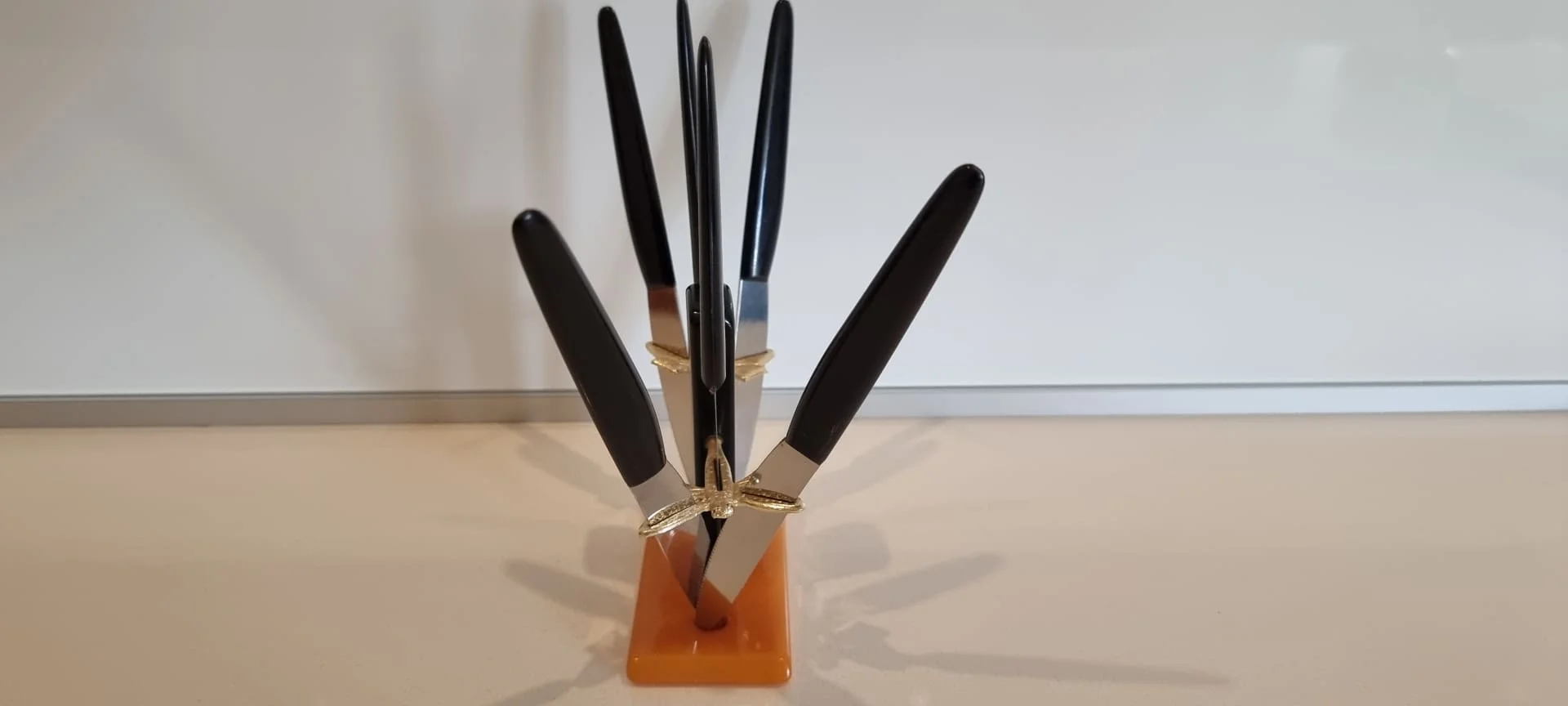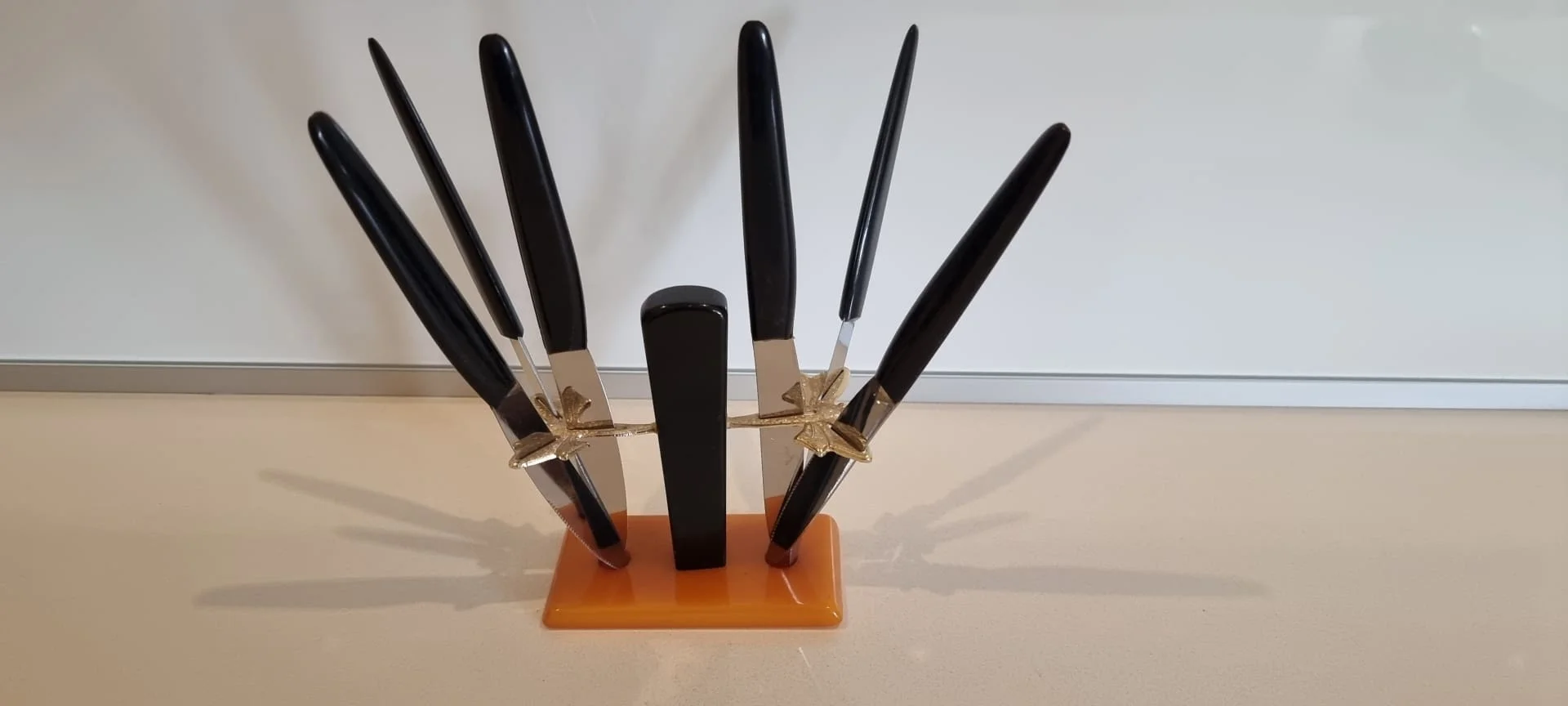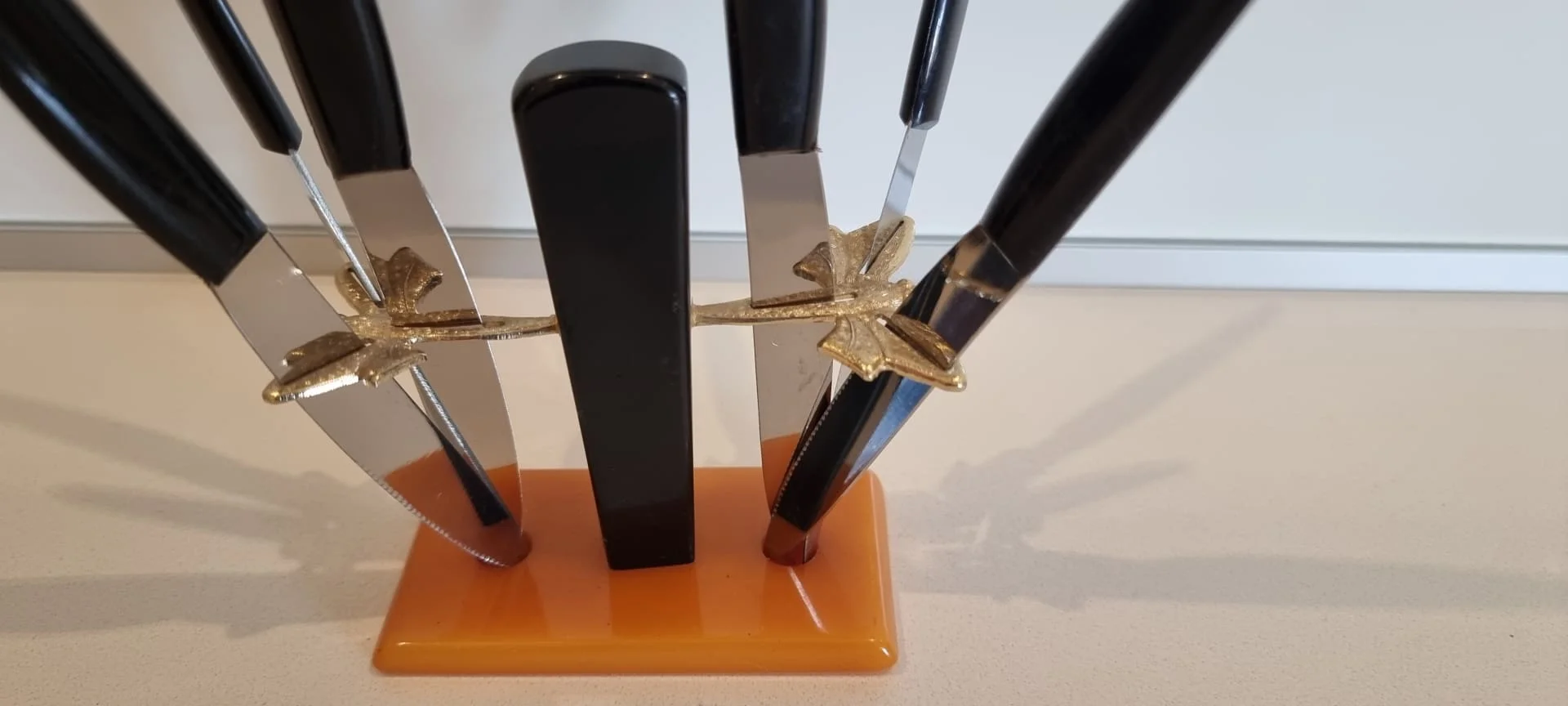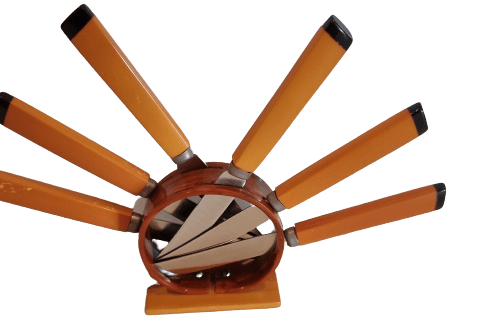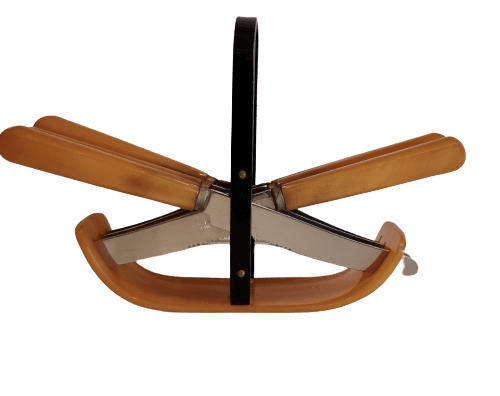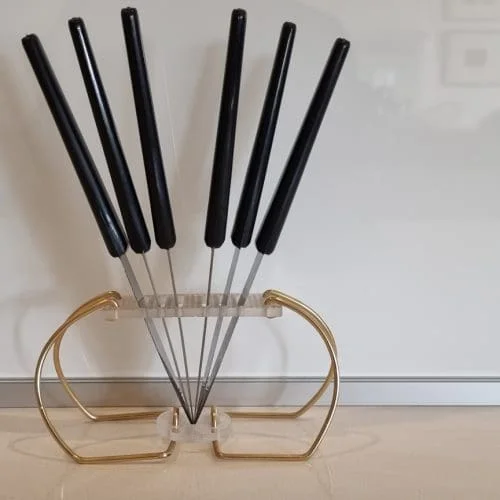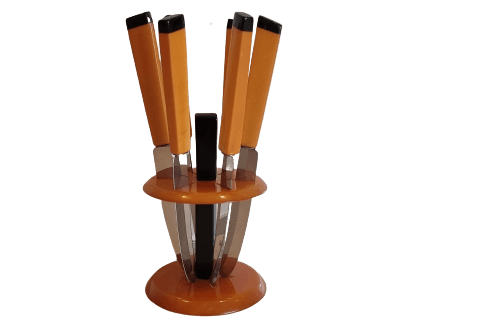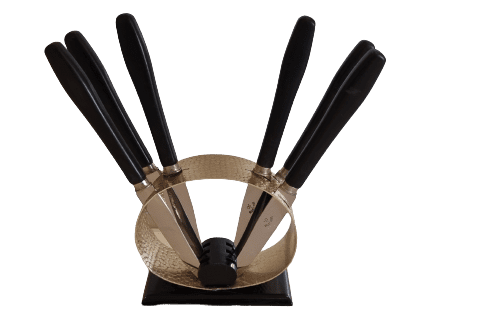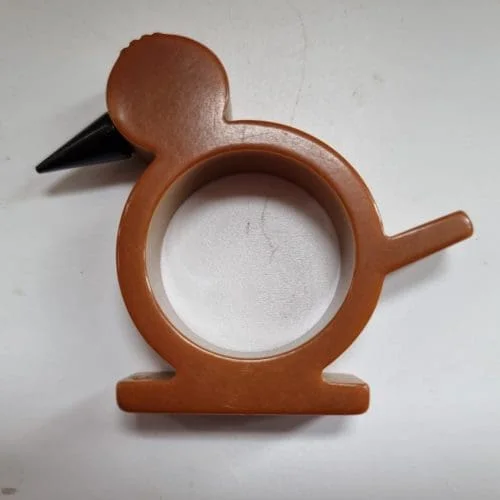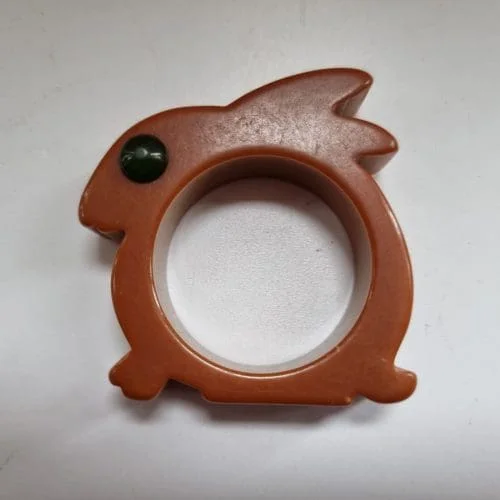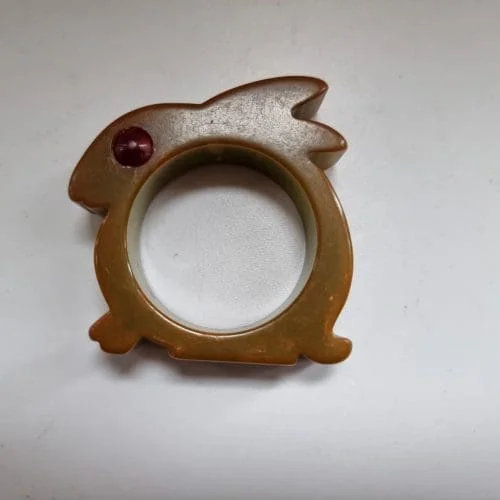About this product
Art Deco Bakelite Handle Knife set in a Bakelite Basket
The Bakelite Corporation was formed in 1922 after patent litigation favorable to Baekeland, from a merger of three companies: Baekeland’s General Bakelite Company; the Condensite Company, founded by J. W. Aylesworth; and the Redmanol Chemical Products Company, founded by Lawrence V. Redman.[14] Under director of advertising and public relations Allan Brown, who came to Bakelite from Condensite, Bakelite was aggressively marketed as “the material of a thousand uses”.[7]: 58–59 [15] A filing for a trademarkfeaturing the letter B above the mathematical symbol for infinity was made August 25, 1925, and claimed the mark was in use as of December 1, 1924. A wide variety of uses were listed in their trademark applications.[16]
Color chart for Bakelite “jewel” quality colors (cast resin or “Clear Material”), 1924
The first issue of Plastics magazine, October 1925, featured Bakelite on its cover, and included the article “Bakelite – What It Is” by Allan Brown. The range of colors available included “black, brown, red, yellow, green, gray, blue, and blends of two or more of these”.[17] The article emphasized that Bakelite came in various forms. “Bakelite is manufactured in several forms to suit varying requirements. In all these forms the fundamental basis is the initial Bakelite resin. This variety includes clear material, for jewelry, smokers’ articles, etc.; cement, using in sealing electric light bulbs in metal bases; varnishes, for impregnating electric coils, etc.; lacquers, for protecting the surface of hardware; enamels, for giving resistive coating to industrial equipment; Laminated Bakelite, used for silent gears and insulation; and molding material, from which are formed innumerable articles of utility and beauty. The molding material is prepared ordinarily by the impregnation of cellulose substances with the initial ‘uncured’ resin.”[15]: 17 In a 1925 report, the United States Tariff Commission hailed the commercial manufacture of synthetic phenolic resin as “distinctly an American achievement”, and noted that “the publication of figures, however, would be a virtual disclosure of the production of an individual company”.[18]
In England, Bakelite Limited, a merger of three British phenol formaldehyde resin suppliers (Damard Lacquer Company Limited of Birmingham, Mouldensite Limited of Darley Dale and Redmanol Chemical Products Company of London), was formed in 1926. A new Bakelite factory opened in Tyseley, Birmingham, around 1928.[19] It was the “heart of Bakelite production in the UK” until it closed in 1987.[20]
A new factory opened in Bound Brook, New Jersey, in 1931.[7]: 75
In 1939, the companies were acquired by Union Carbide and Carbon Corporation.
In 2005 German Bakelite manufacturer Bakelite AG was acquired by Borden Chemical of Columbus, OH, now Hexion Inc.[1]
In addition to the original Bakelite material, these companies eventually made a wide range of other products, many of which were marketed under the brand name “Bakelite plastics”. These included other types of cast phenolic resins similar to Catalin, and urea-formaldehyde resins, which could be made in brighter colors than polyoxybenzylmethyleneglycolanhydride.[3][7]
Once Baekeland’s heat and pressure patents expired in 1927, Bakelite Corporation faced serious competition from other companies. Because molded Bakelite incorporated fillers to give it strength, it tended to be made in concealing dark colors.[7] In 1927, beads, bangles and earrings were produced by the Catalin company, through a different process which enabled them to introduce 15 new colors. Translucent jewelry, poker chips and other items made of phenolic resins were introduced in the 1930s or 1940s by the Catalin company under the Prystal name.[21][22] The creation of marbled phenolic resins may also be attributable to the Catalin company
